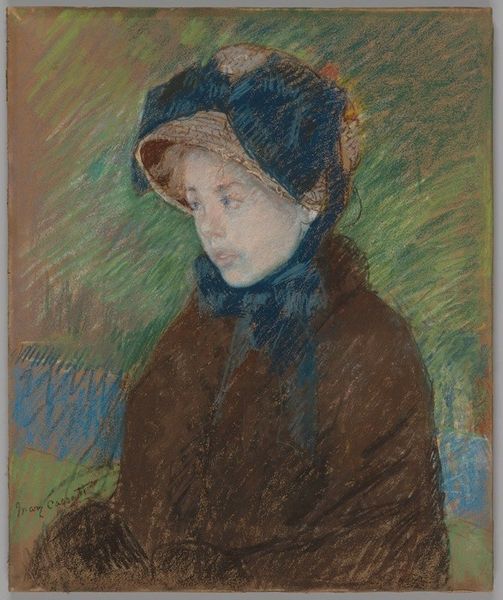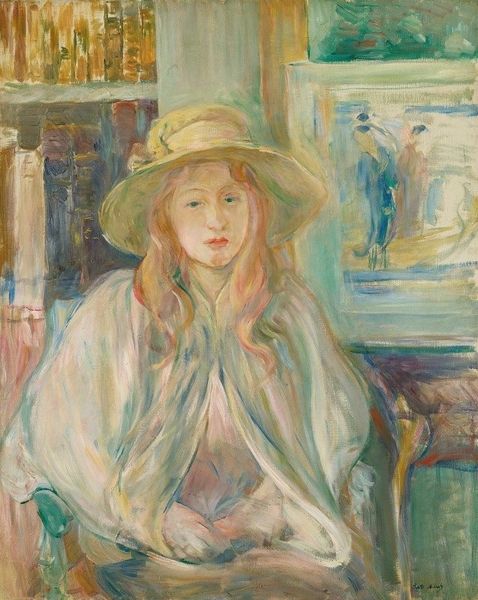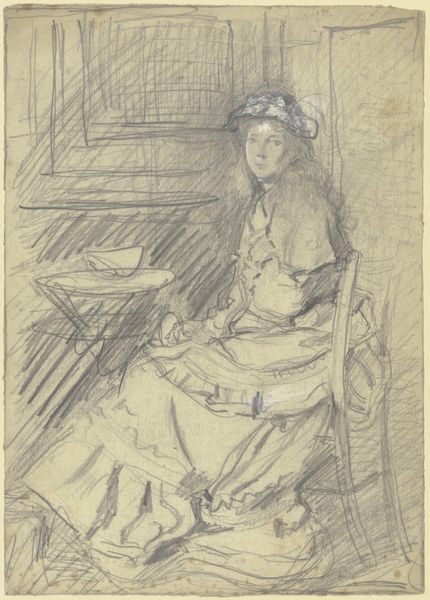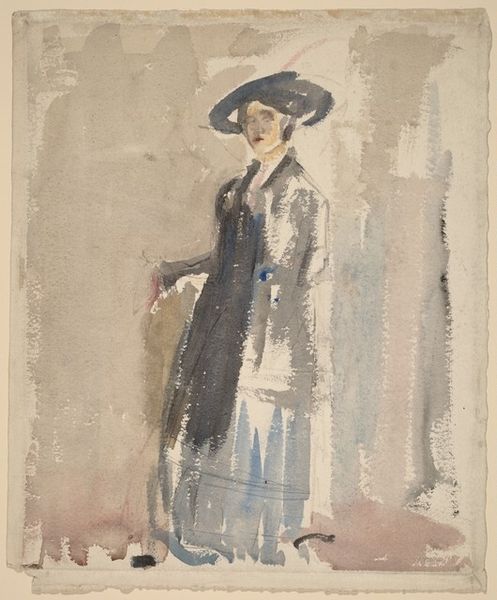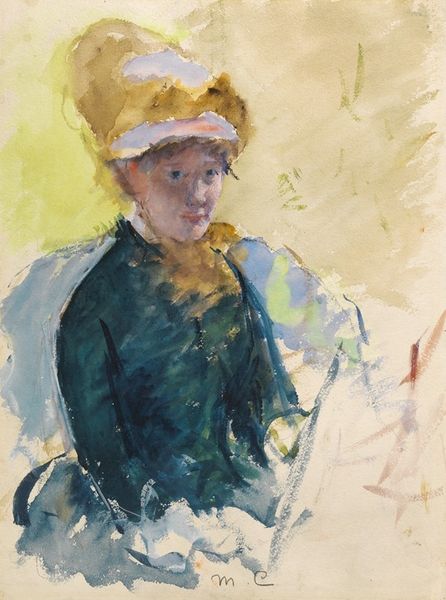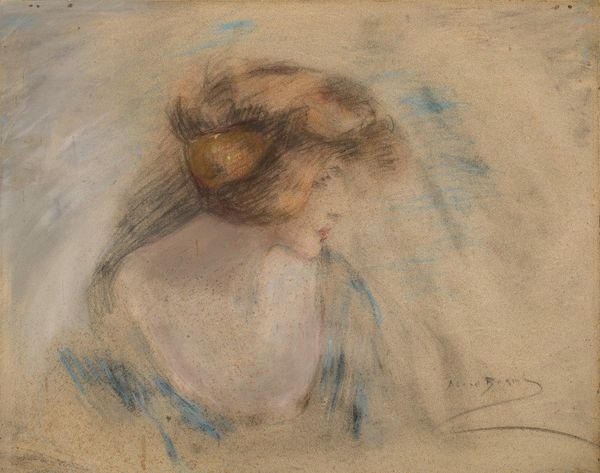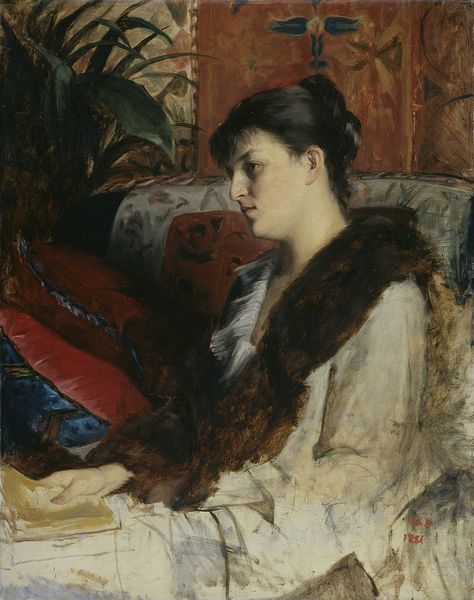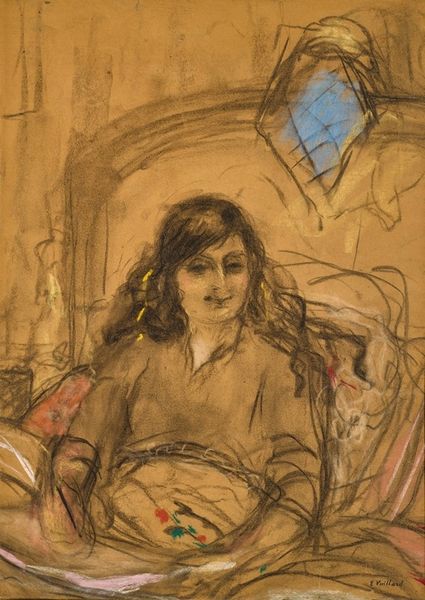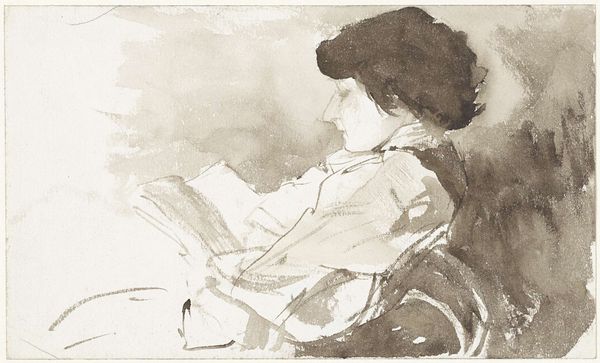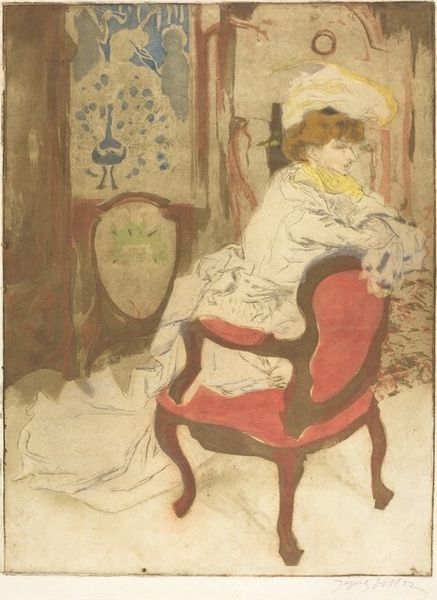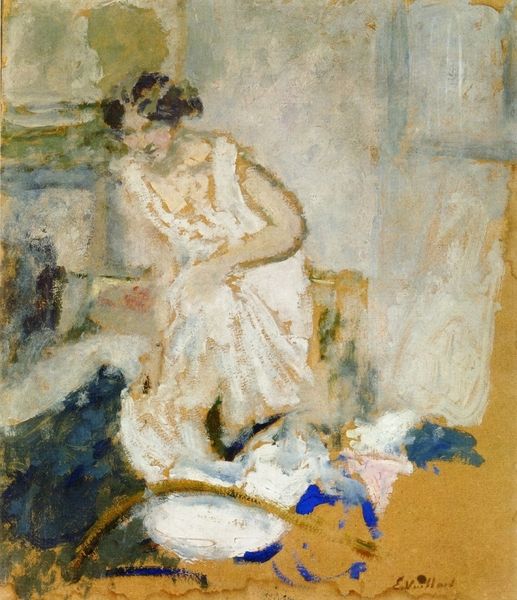
watercolor
#
portrait
#
oil painting
#
watercolor
#
intimism
#
genre-painting
#
watercolor
Dimensions: height 229 mm, width 305 mm
Copyright: Rijks Museum: Open Domain
Curator: This watercolor, "Zittende lezende vrouw"—"Seated Woman Reading"—housed here at the Rijksmuseum, is attributed to Bramine Hubrecht and believed to have been created sometime between 1865 and 1913. Editor: My first impression is one of gentle domesticity. The muted palette gives the whole scene a rather melancholic feel, and the subject appears so immersed in her book. It feels like a privileged glimpse into a quiet, personal moment. Curator: Precisely! Hubrecht, although a less celebrated figure, fits into a lineage of women artists exploring intimate scenes within the home, reflecting burgeoning female autonomy in selecting leisure activities like reading. Editor: It’s interesting how the sketch-like quality actually enhances that intimacy. The quick strokes of watercolor give the impression of immediacy, almost as if she's been caught unawares, just relaxing, reading, inside the private world that’s become increasingly more accessible. Curator: Indeed. The loose brushwork speaks to a particular understanding of womanhood, one centered on reflection and intellectual pursuits, which was radical, considering the limitations imposed on women's lives. She embodies this burgeoning idea of the New Woman in the intellectual space afforded to women of a certain class and station. Editor: When considering her tools, I keep thinking about the easy access and mobility that watercolor as a medium offers. She is sitting and reading comfortably and unbothered in her chair, perhaps working away from the bustle of male creative environments. It seems a rather unassuming piece, yet that's the heart of the whole endeavor. The ease, the quiet, the subtlety speaks volumes about women artists' historical engagement. Curator: The materiality definitely allows her access to those worlds of self-expression and observation in ways more traditionally demanding and historically valued materials may have impeded. The subject isn't overtly confronting society; her act of reading becomes its own quiet resistance and, dare I say it, triumph. Editor: Ultimately, it leaves us thinking about all the hidden narratives within quiet domestic spaces, all those women’s creative processes that unfolded quietly in such spaces. Curator: A soft rebellion captured through the very materiality of paint. Beautiful.
Comments
No comments
Be the first to comment and join the conversation on the ultimate creative platform.

